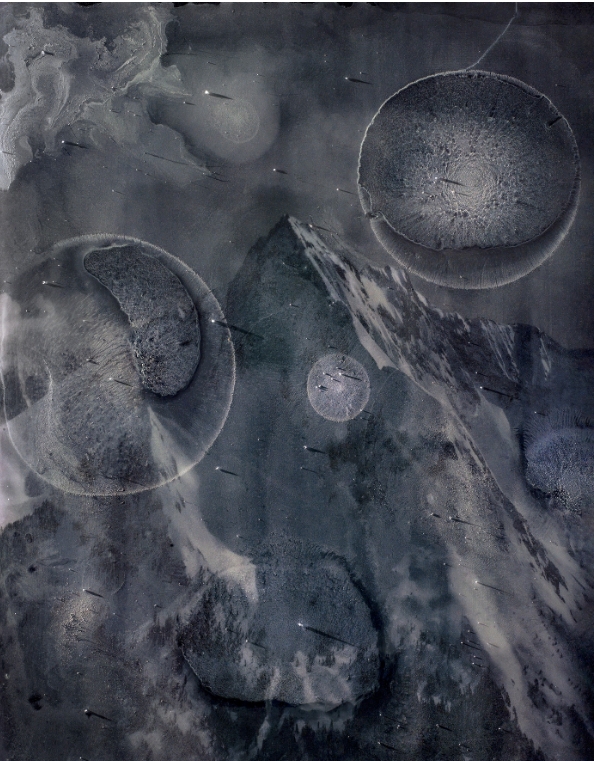The scale of many of the new works is extensive. The large format is paralleled by large themes, yet the photographs of archival materials also feature minuscule specks of dust, particles that are barely visible. The central components of Puranen’s art – shadows, dust, scratches and reflections – have featured in his photographs for decades; in the new series they are now joined by liquid. Constructed of superimposed layers of images, the works invite the eye to look both near and far. The layers are like maps – maps of the past and of the future, of their reciprocal and oscillating motion.
They Could Hear a Faraway Thunder transforms eerie Arctic landscapes into otherworldly vistas that are almost like moonscapes. Through the combination of found imageries, experiments with pigments, and randomness, Puranen’s new works conjure up a world that is fragile and fleeting. The series is inspired by experiments joining 19th-century science with photography and by fleeting encounters between light and matter. As the author John Berger once remarked: “What makes photography a strange invention is that its primary materials are light and time.”
Using imageries from archival and museum sources, Puranen investigates cultural memory. His practice is driven by a sensitivity to issues of history, time and place. The exhibition presents his photographs in interconnected wholes that give rise to poetic as well as narrative possibilities.




